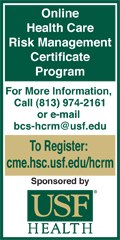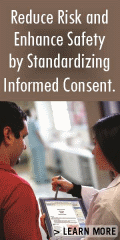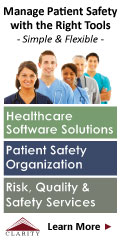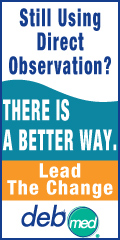 |
 |
 |

January / February 2008

Using Technology to Establish Clinical Context
By Mike Dempsey and Sue Niemeier, RN, MHA
| |

 |
The association between the patient's wristband active-RFID tag and the one worn by the nurse can be used to measure direct-care time.
|
As health systems continue to extend evidence-based medicine by implementing EHRs, CPOE and clinical decision-support tools, other, complementary, IT-enabled tools are maturing to help transform the clinical enterprise. One of these technology enablers combines automatic identification (autoID) and real-time location systems to establish clinical context, the set of circumstances that surround a particular patient-centered event.
Clinical context provides us an associative view of the patient — a coherent view of the patient in time and space — that can result in a smoother, more integrated flow of the patient through the health enterprise. It's where high-tech logistics meet clinical transformation.
Clinical context begins with smart use of available autoID technology. We all use autoID technology regularly. In essence, autoID technology is a computer system that can identify people or things. The barcode is one of the simplest forms of autoID: when we pass through the store checkout and our items are electronically scanned by the clerk, the system sends each product's barcode to a computer that records product price and description. Because this form of autoID has been used ubiquitously for years, most of us take it for granted. Barcodes have increasingly found their way into hospitals to allow the identification of patients, staff, drugs, and medical devices (HIBCC, 2007).
We use a slightly more sophisticated form of autoID in the card that allows us into our hospital, garage, or office. This card has a small electronic circuit in it called a passive radio frequency identification, or passive RFID, chip that identifies you the bearer to the computer in the box next to the door. A swipe of the card by the box allows the computer to compare data from the RFID chip to a list of those folks authorized to unlock the door. If you're on the list of this "in crowd," the door unlocks.
AutoID systems tend to be short-range in operation; the RFID card to unlock the door needs to be brought up quite close to the reader. And, while location can be inferred from some of these systems — the system knows you were at a specific door at a specific time — it doesn't know where you were before you got to the door or after you walked through it. In contrast, real-time location systems (RTLS), offer the identification that other autoID systems provide, but also continuously update location data. RTLSs typically use a small tag with a radio in it and then transmit the radio signal to receivers planted throughout the hospital and linked to a computer network. Once the central server receives the signal, it calculates the location of each tag. The whole process, which takes only milliseconds, works only if antennas are in place — that way the radio signal can be "heard" — so the coverage area can be set up to preclude tracking of people or things in sensitive areas like bathrooms or lounges. Unlike the more common passive RFID systems, which are short range (~ 3 inches), these RTLS have a longer range (~ 30 feet).


|
 |
 |
 |


















|
 |



